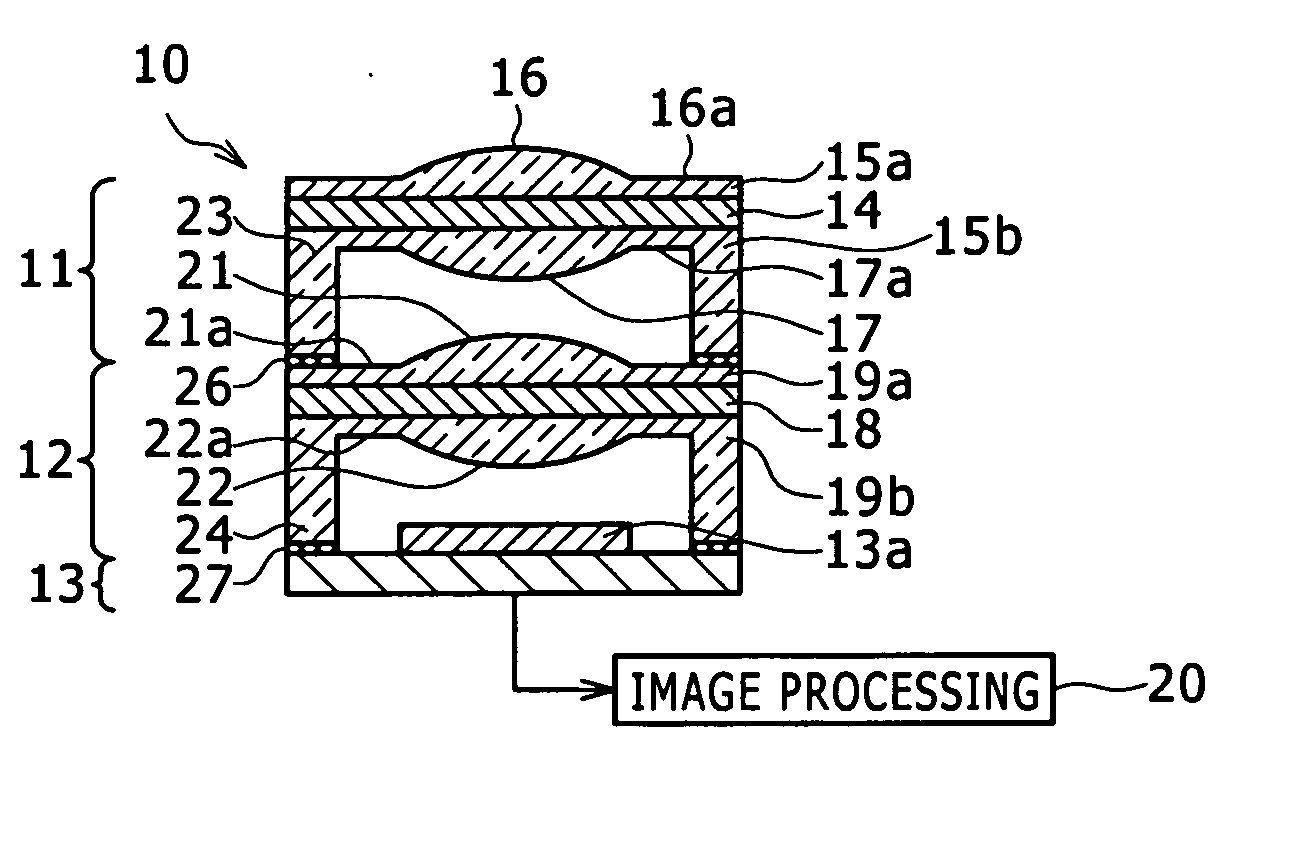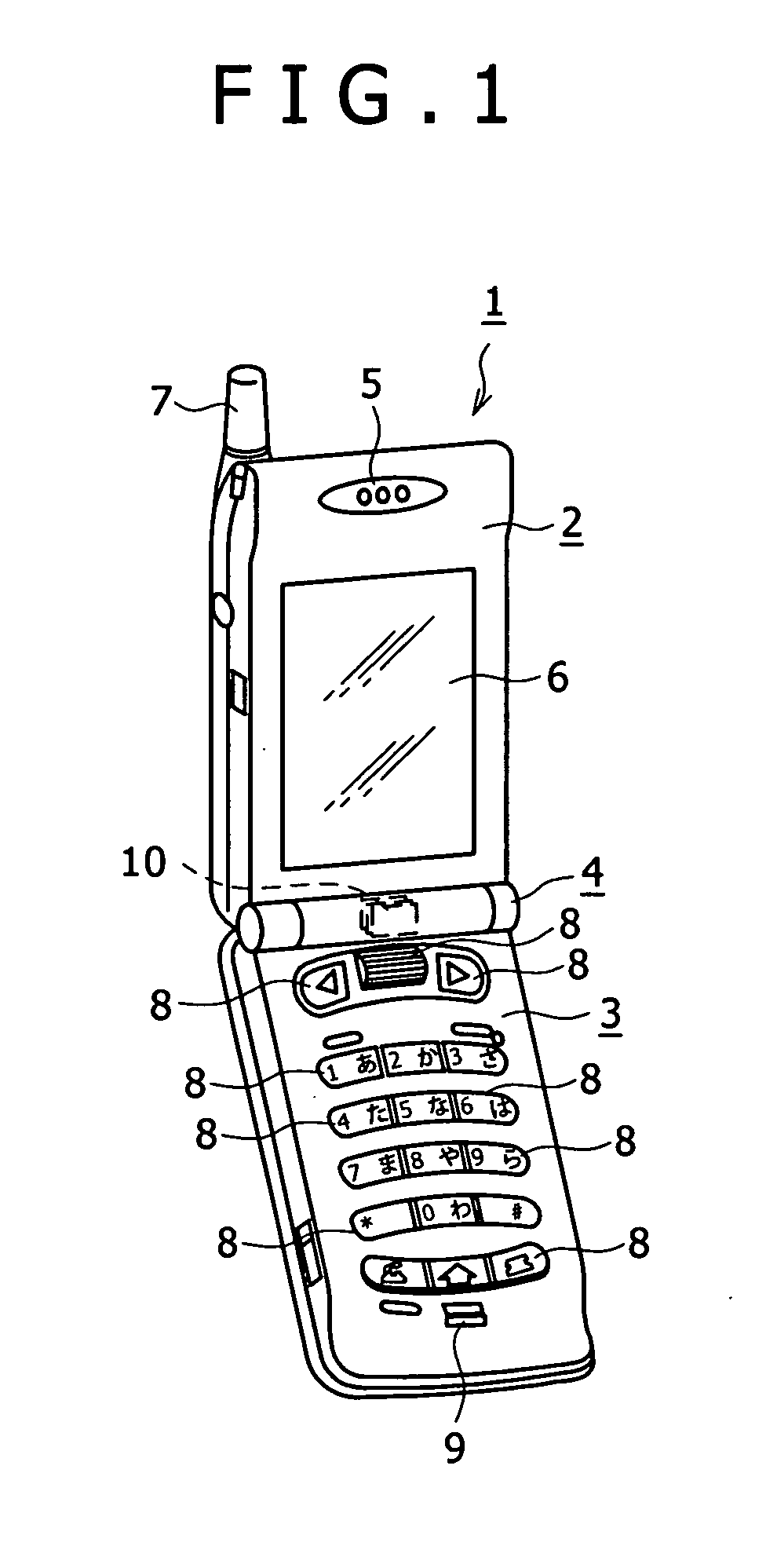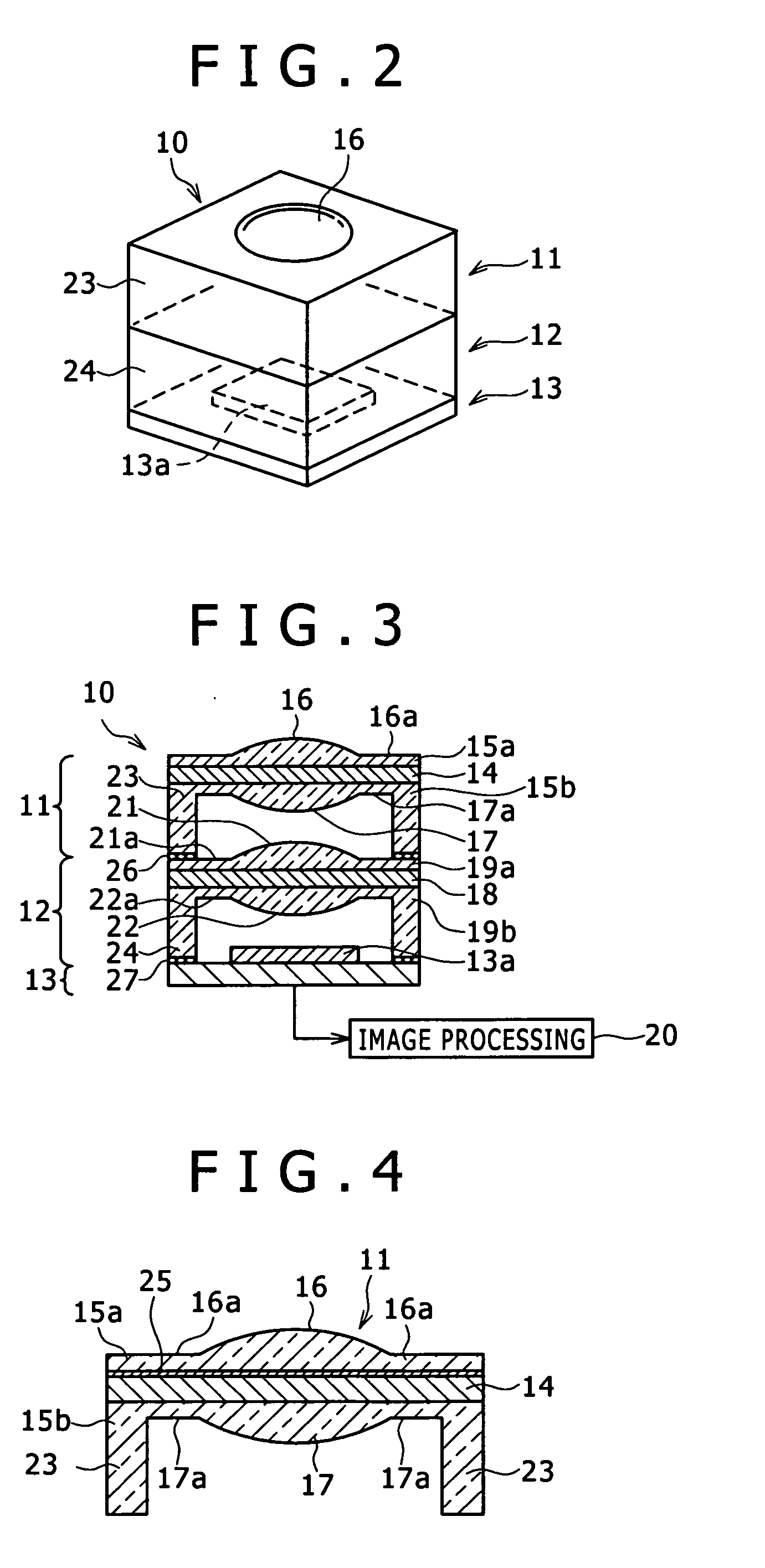Image pickup lens, camera module using the same, image pickup lens manufacturing method and camera module manufacturing method
- Summary
- Abstract
- Description
- Claims
- Application Information
AI Technical Summary
Benefits of technology
Problems solved by technology
Method used
Image
Examples
Embodiment Construction
[0038]A description will hereinafter be described of camera modules according to embodiments of the present invention with reference to the drawings. Incidentally, the embodiment of the invention is below described in the following order.
[0039](1) A description of a mobile phone
[0040](2) A description of a camera module
[0041](3) A description of a camera module manufacturing method
[0042](4) Modifications[0043](4-1) A modification of a glass lens substrate[0044](4-2) A modification of an image pickup lens[0045](4-3) A modification of a spacer[0046](4-4) Other modifications
(1) A Description of a Mobile Phone
[0047]Referring to FIG. 1, a mobile phone 1 on which a cameral module according to an embodiment of the present invention is mounted is such that a first casing 2 and a second casing 3 are coupled to each other in a foldable manner via a hinge portion 4. The first casing 2 is provided with a speaker 5, a display portion 6 and an antenna 7. The antenna 7 is telescopic. The second ca...
PUM
 Login to View More
Login to View More Abstract
Description
Claims
Application Information
 Login to View More
Login to View More - R&D
- Intellectual Property
- Life Sciences
- Materials
- Tech Scout
- Unparalleled Data Quality
- Higher Quality Content
- 60% Fewer Hallucinations
Browse by: Latest US Patents, China's latest patents, Technical Efficacy Thesaurus, Application Domain, Technology Topic, Popular Technical Reports.
© 2025 PatSnap. All rights reserved.Legal|Privacy policy|Modern Slavery Act Transparency Statement|Sitemap|About US| Contact US: help@patsnap.com



